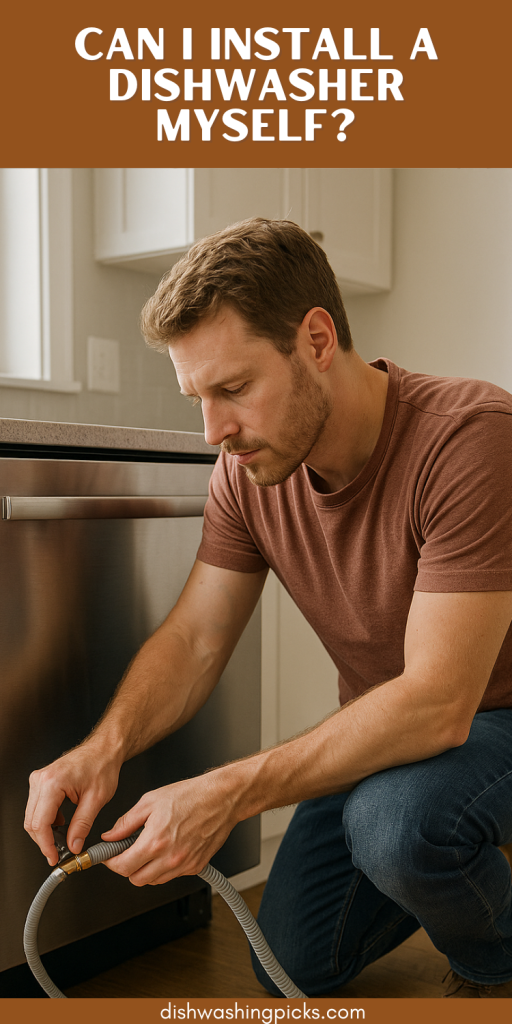
Let’s be real for a second…
You’ve been eyeing that shiny new dishwasher sitting in your kitchen, still boxed up, silently judging you. The manual is thicker than a mystery novel, and your instinct is split—part of you says, “Let’s do this!” and the other part is wondering if you’re about to flood your kitchen.
So the million-dollar question is: Can you really install a dishwasher yourself?
Spoiler alert: Yes, you probably can—but there are some things you absolutely need to know first. Let’s break it down together, one step at a time.
What’s Involved in Installing a Dishwasher?
Okay, before you grab your toolbox and start unscrewing cabinets, take a second to imagine this…
You’re sliding the new dishwasher into place, everything fits like a glove, and the first wash cycle goes off without a hitch. No leaks. No sparks. Just sparkling clean dishes.
Sounds great, right? But how do you get there?
Here’s what installation typically involves:
- Connecting to water supply
- Hooking up the drain hose
- Wiring into the electrical system
- Leveling the unit so it doesn’t wobble like a café table
- Sliding it in and securing it in place
If that sounds intimidating, don’t worry. We’re not talking rocket science—but you’ll need a little patience and the right tools.
Do You Need Special Tools or Skills?
Not necessarily, but a basic comfort level with plumbing or wiring helps. If you can use a wrench and a screwdriver without sweating bullets, you’re halfway there.
Here’s a quick checklist of what you might need:
- Adjustable wrench
- Screwdrivers (Phillips and flathead)
- Level (yep, that little bubble thing)
- Bucket or towel (for water spills, just in case)
- Plumber’s tape
- Maybe a wire stripper, depending on your setup
And hey, if you’re handy enough to put together IKEA furniture without ending up with three mystery pieces, you’re probably fine.
When Should You Call in a Pro?
Alright, let’s talk honesty.
If your kitchen has never had a dishwasher and you’re staring at a wall of cabinets—this might not be the time to play hero. Why? Because you’ll need to:
- Cut into cabinetry
- Tap into plumbing lines
- Possibly add a new electrical outlet
That’s full-on remodel territory. In that case, a licensed plumber or electrician could save you time, frustration, and… drywall damage.
But if you’re replacing an existing dishwasher, and the hookups are already there? You’re likely golden.
Still unsure? Try this:
- Imagine you’re halfway through, and suddenly water starts leaking, or a breaker trips.
- Would you know what to do next?
If the answer is “nope,” it’s perfectly okay to phone a friend (or a pro).
Tips for a Smooth DIY Installation
If you’re feeling brave and ready to go for it, here’s how to stack the odds in your favor:
Read the manual — Yeah, it’s dry, but it has key details about your model
Turn off power and water — Non-negotiable
Take pictures of the old setup before uninstalling it — lifesaver move
Test everything before pushing the unit all the way in
Seal gaps or potential leak points with plumber’s tape or clamps
Pro tip: Run a short cycle and check under the dishwasher for any signs of dripping water. Better safe than sorry, right?
Should You Do It?
So… Can you install a dishwasher yourself?
Absolutely—if you’ve got the tools, a good setup, and the patience to follow each step carefully.
Should you? That depends on your comfort level and how complicated your kitchen setup is.
If you’re even a little bit unsure, there’s no shame in calling in help. But if you’ve got that DIY spirit and a functioning outlet and plumbing setup—give it a shot. Worst case? You learn something new. Best case? You save a couple hundred bucks and walk away feeling like a home-improvement rockstar.
